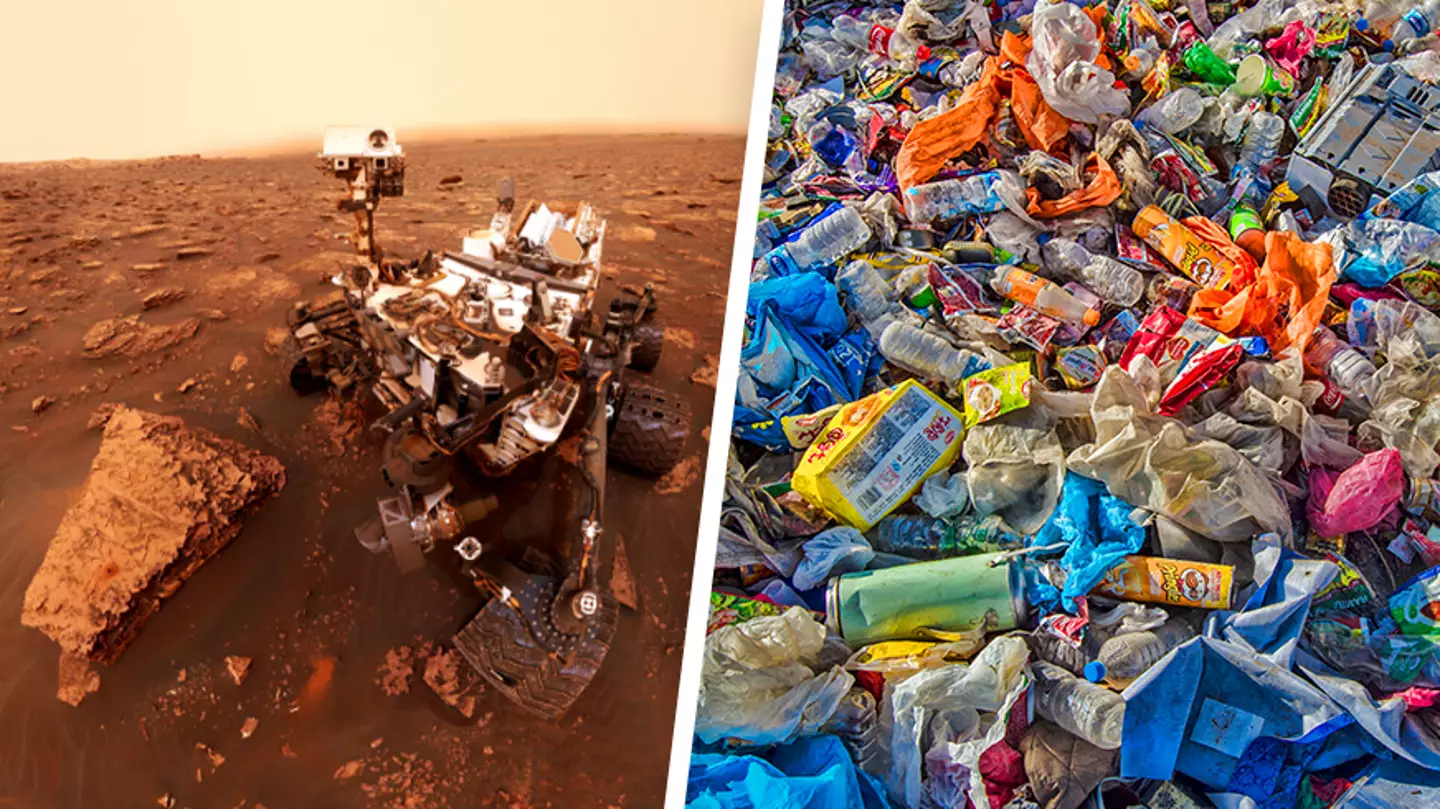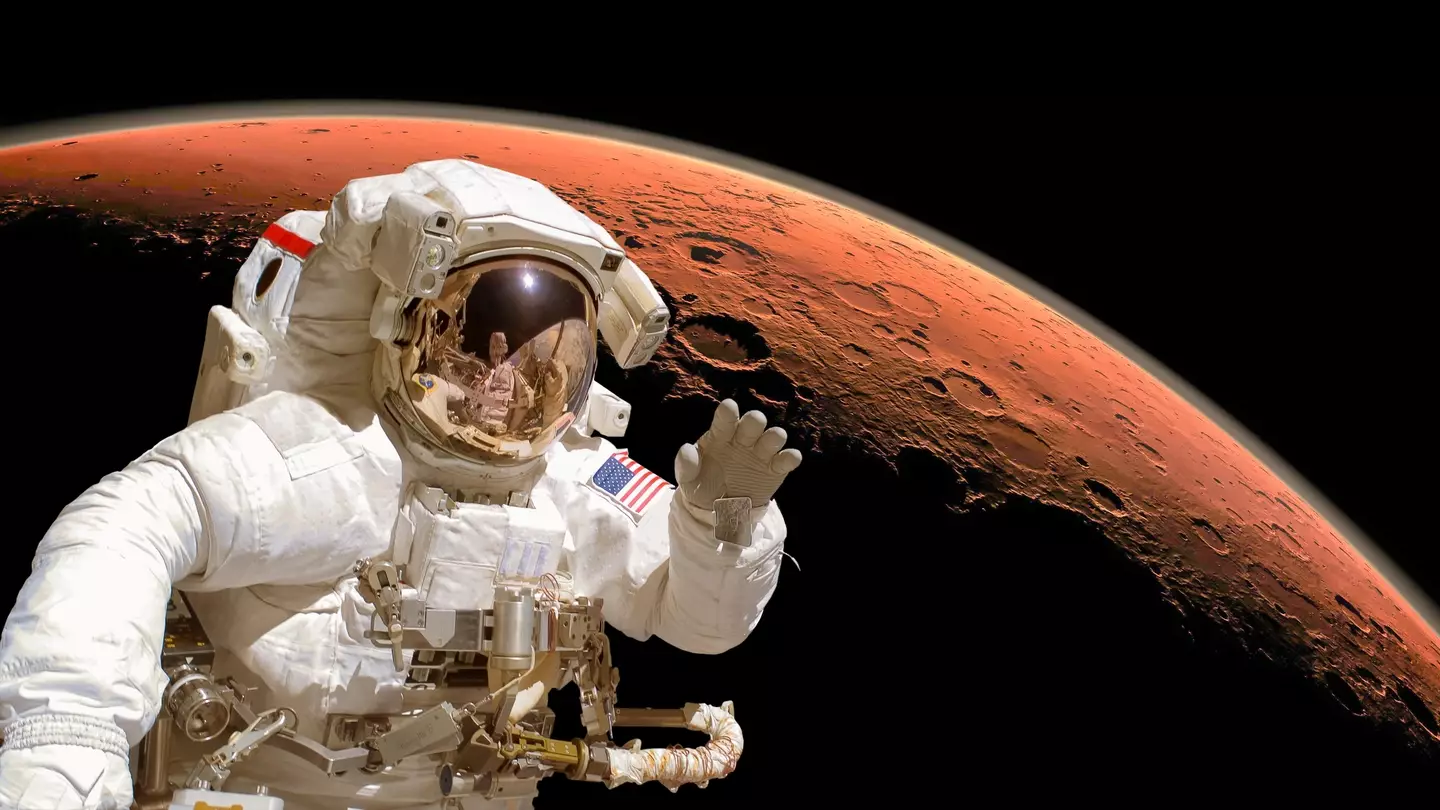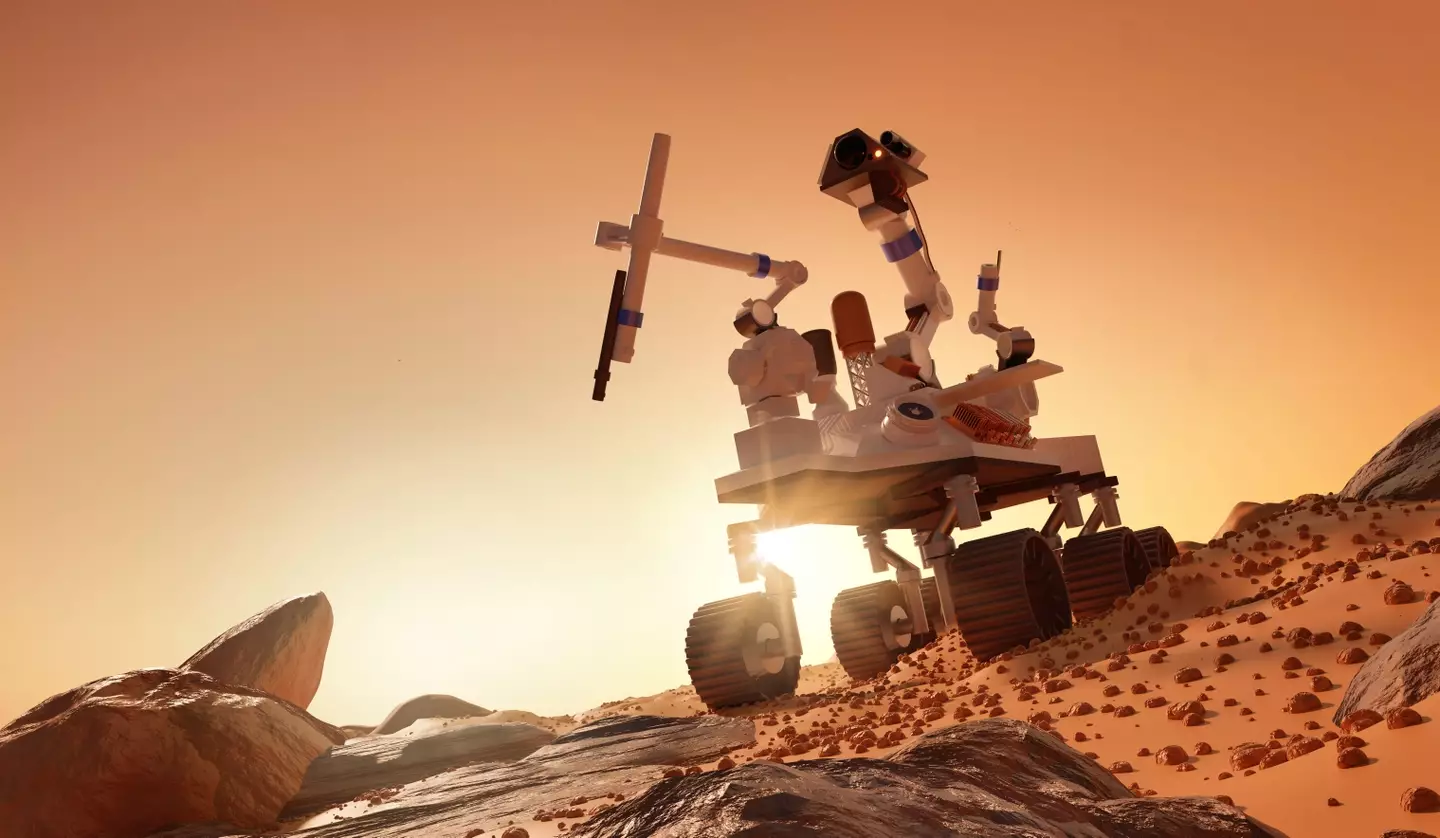
In Brooklyn 99, there's a hilarious scene where Captain Raymond Holt gives Detective Jake Peralta a choice of two images: one is the interior of his work locker. The other is a garbage dump in the Philippines.
Both images turn out to be the interior of Jake's locker. But there is now a third option Captain Holt didn't include: the face of our closest neighbouring planet, Mars.
After 50 years of space exploration, we're now choking the Red Planet with our waste.
The planet - possibly soon to be renamed the Big Garbage Dump In The Sky - is covered with a whopping 7,119 kilograms of rubbish.
Advert

We'll bet Trash Island out in the Great Pacific Ocean is seething with jealousy right now as it is now not the saddest tale of humankind's waste to make the annals of history.
According to The Conversation, nations around Earth have sent 18 human-made objects to Mars in more than 14 separate missions.
Many of those missions are still underway, including the little space robot called the Mars Rover.
Advert
Cagri Kilic, who is a Postdoctoral Research Fellow in Robotics at America's West Virginia University, is behind a study that tracks Mars and Moon rovers and hoo, boy, they're tracking a lot of rubbish too.
"Debris on Mars comes from three main sources: discarded hardware, inactive spacecraft and crashed spacecraft," Kilic writes for The Conversation.
"Every mission to the Martian surface requires a module that protects the spacecraft. This module includes a heat shield for when the craft passes through the planet’s atmosphere and a parachute and landing hardware so that it can land softly."
The spacecraft sheds bits of the module as it lands, and they break off and can drift all over the surface of the planet thanks to 'Martian winds'.
Advert

They've also found netting, dead and crashed spacecrafts, snapped-off aluminium wheels, and more.
"When you add up the mass of all spacecraft that have ever been sent to Mars, you get about 22,000 pounds (9,979 kilograms)," Kilic said.
"Subtract the weight of the currently operational craft on the surface – 6,306 pounds (2,860 kilograms) - and you are left with 15,694 pounds (7,119 kilograms) of human debris on Mars."
Advert
That's a whole lot of space junk.
Kilic adds that 'the main concern scientists have about trash on Mars is the risk it poses to current and future missions.
"The Perseverance teams are documenting all debris they find and checking to see if any of it could contaminate the samples the rover is collecting," he said, as per The Conversation.
"NASA engineers have also considered whether Perseverance could get tangled in debris from the landing but have concluded the risk is low."
Advert
Yikes.
